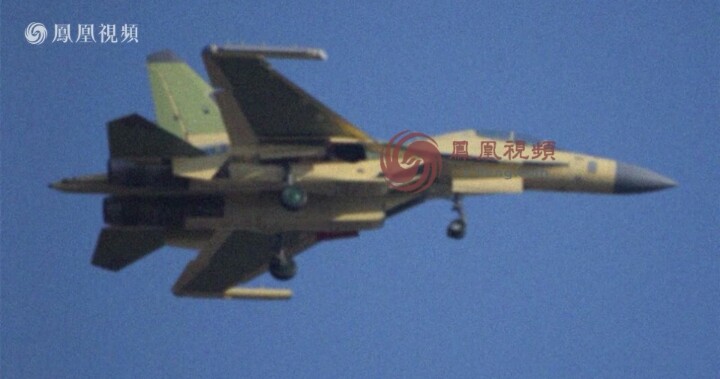

While China’s Anti-Access/Area Denial (A2/AD) operations rely on heavy air defenses, Chinese air force planners may also have to account for enemy surface to air missiles, all the more with Taiwan and Japan embarking on a new buildup of missile shields. In December, one of the responses was revealed: the Shenyang J-16D.

The J-16D is a J-16/Su-30 multi-role fighter optimized for “Wild Weasel” missions. Starting in the Vietnam War, Wild Weasels are fighters designed to take on surface-to-air missile batteries in a SEAD (Supression of Enemy Air Defense) role. Armed with anti-radiation missiles (which lock on and target radars by their electronic emissions) and electronic intelligence and electronic warfare jammers, they are designed to engage and suppress defenses, opening the way for traditional air attacks.

Compared to the baseline J-16, the J-16D has removed its Infrared Search Tracking sensor and 30mm cannon to accommodate more electronics inside its fuselage. It also has several antennas mounted around its fuselage. The J-16D also two large ELINT pods on its wingtips, similar to those on the E/A-18 Growler, to collect enemy radar and electronic activity. Additionally, the J-16D has smaller radome, likely to include an active electronically scanned array (AESA) radar optimized for electronic warfare, including signals collection and jamming. The J-16D will be fitted with large AESA jamming pods, a development of current jammers on JH-7A attack aircraft; its attack ability will come from YJ-91, LD-10 and other anti-radiation missiles.

The J-16D provides Chinese aerial operations with a fast, maneuverable and long range EW and Wild Weasel platform that can protect Chinese fighters and bombers like the J-10, J-11, J-15, J-20, J-31 and H-6K bomber. This will be an important requirement in combat operations in increasingly militarized areas like the Taiwan Straits and South China Seas. In combat operations, the J-16 would first use its jammers to disrupt the target and fire control of enemy air defenses, before firing its long range anti-radiation missiles, which are equally deadly against both mobile and fixed air defenses. As a fighter, it can still take part in aerial combat in self defense and to protect other aircraft against enemy fighters.

China’s increasing ability to protect its power projection capabilities shows that its advances in military technology are just as much focused on taking action aboard to advance its interests, as opposed to the A2AD narrative of hunkering down against enemy threats. And, much as the US plans for F-35/22, Chinese Wild Weasel capabilities can be expected to migrate to fifth-generation stealth fighters, carrier aircraft, and drones large and small.
You may also be interested in:
The J-11D Surprise: China upgrades Russian Flanker Fighters on Its Own
The Missiles of Zhuhai: China Displays New Strike Arsenal
Chinese Air Force Takes Delivery of New J-16 Strike Fighters
A New Chinese Spy Plane for all Seasons
New Chinese Spy Ship, Coming soon to a U.S. Naval Exercise?
